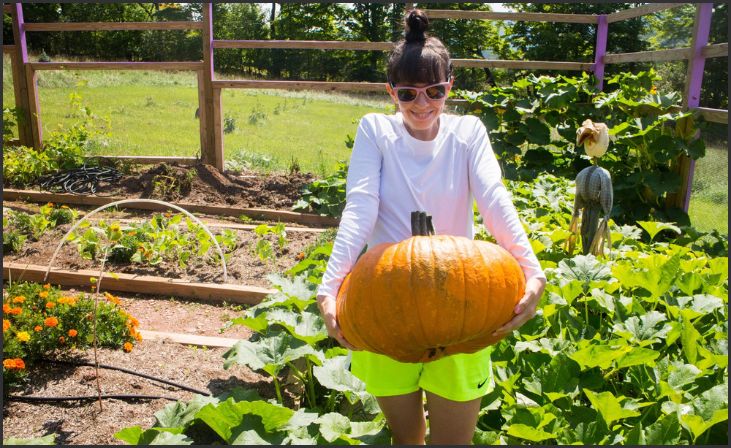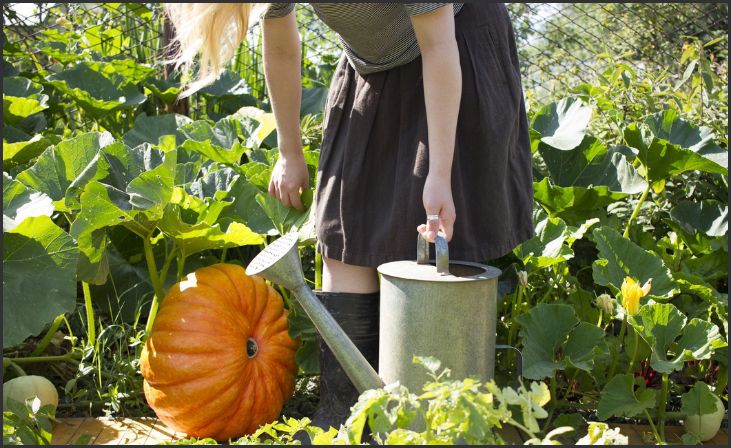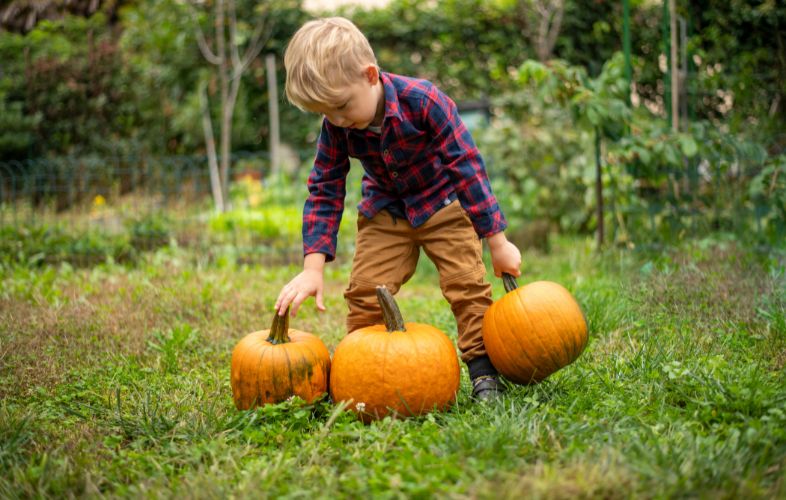Embarking on the journey of Pumpkin Gardening In Different Climate Zones opens a world of possibilities, offering a diverse tapestry of experiences for individuals passionate about cultivating pumpkins. Whether you find yourself in the frosty embrace of the Arctic or under the sun-soaked skies of the tropics, engaging in pumpkin gardening transcends mere cultivation—it becomes a deeply rewarding and enriching endeavor.
In the frosty Arctic, where icy winds and short growing seasons prevail, venturing into pumpkin gardening requires a unique set of skills and strategies. The challenge of coaxing pumpkins to thrive in such extreme conditions adds an element of adventure, turning each successful harvest into a triumph over nature’s harsh elements.
Conversely, in the warm and sun-drenched tropics, cultivating pumpkins presents a different set of challenges and joys. The vibrant hues of tropical landscapes provide a picturesque backdrop to the thriving pumpkin plants, showcasing the resilience and adaptability of this beloved crop in the face of intense heat and abundant sunlight.
Select the Right Location:
The success of your pumpkin garden begins with choosing the right location. Pick a spot that receives ample sunlight, ideally 6 to 8 hours a day. Pumpkins thrive in well-drained soil, so ensure the chosen area has good drainage. Adequate sunlight promotes healthy growth and robust fruit development, while well-drained soil prevents waterlogged roots and associated problems.
Also Read:- ORGANIC PUMPKIN FARMING PRACTICES
Proper Spacing and Support:

Give your pumpkin plants enough space to spread out. Plant seeds or seedlings at least 3 to 5 feet apart, allowing for proper airflow and reducing the risk of diseases. Additionally, consider providing support for the developing fruit. Placing a board or straw underneath the pumpkins can prevent direct contact with the soil, reducing the likelihood of rot and enhancing fruit quality.
Watering Consistently:
Throughout their growing season, pumpkins need constant hydration. Particularly during dry conditions, water deeply and frequently. Mulching the area around the plants inhibits weed growth and helps the soil stay moist. However, exercise caution when watering too much since soggy circumstances can lead to root illnesses in pumpkin plants. It’s crucial to strike a balance between steady moisture and adequate drainage.
Fertilize Strategically:
Pumpkins are heavy feeders, so it’s essential to provide them with the nutrients they need. Start with a balanced fertilizer at planting time, and then supplement with additional feedings during the growing season. Follow package instructions to avoid over-fertilizing, which can lead to imbalances and adversely affect plant health. Consider using organic fertilizers to promote long-term soil fertility.
Monitor for Pests and Diseases:
Regularly inspect your pumpkin plants for signs of pests and diseases. Common pests include aphids and cucumber beetles, while powdery mildew and downy mildew are prevalent diseases. Implement preventative measures, such as applying insecticidal soap or neem oil for pests, and fungicides for diseases. Early detection and intervention are key to minimizing damage and ensuring a healthy pumpkin crop.
Pumpkin Gardening In Different Climate Zones
Choose the Right Variety:

Pumpkin varieties vary in their adaptability to different climates. In warmer climates, heat-tolerant varieties like ‘Cinderella’ or ‘Musquee de Provence’ thrive. These varieties have evolved to withstand higher temperatures, ensuring a successful harvest even in the scorching heat. In cooler climates, opt for shorter-season varieties such as ‘Jack Be Little’ or ‘Small Sugar.’ These varieties mature more quickly, allowing for a full harvest before the frost sets in.
Planting Time:
The timing of planting is crucial for pumpkin success. In warmer zones, direct seeding after the last frost ensures that seeds germinate in warm soil, promoting vigorous growth. In cooler zones, starting seeds indoors gives them a head start before transplanting outdoors after the last frost. This indoor cultivation helps extend the growing season, especially in regions with a shorter frost-free period.
Soil Preparation:
Pumpkin plants demand well-draining soil rich in organic matter. Incorporating compost or well-rotted manure not only enhances fertility but also improves soil structure, allowing roots to penetrate easily. Regular soil testing is essential to adjust pH levels to the optimal range for pumpkins, creating an environment conducive to nutrient absorption.
Watering:
Maintaining consistent moisture is crucial for pumpkin development, particularly in warmer climates where evaporation rates are higher. Mulching around plants acts as a protective barrier, conserving soil moisture and regulating temperature. However, a delicate balance is essential, as overwatering can lead to root diseases, emphasizing the importance of monitoring soil moisture levels.
Fertilization:
Pumpkins are heavy feeders, requiring ample nutrients for robust growth. Applying a balanced fertilizer at planting provides essential elements for initial development. Throughout the growing season, periodic supplementation with fertilizers ensures a sustained supply of nutrients. Careful adherence to recommended application rates prevents nutrient imbalances, promoting healthy foliage, blossoms, and fruit development.
Pollination:
Successful pollination is vital for pumpkin fruit set, and climate conditions influence pollinator activity. In case of inadequate natural pollination, proactive measures such as hand-pollination can be implemented. Gently transferring pollen from male to female flowers using a brush ensures thorough pollination, increasing the chances of robust fruit development.
Pest and Disease Management:
Pumpkin plants face various challenges from pests and diseases, with susceptibility influenced by climate conditions. Regular monitoring of plants allows for early detection of pests like aphids or cucumber beetles. In warmer, humid climates, the risk of diseases like powdery mildew is heightened. Timely intervention with organic remedies such as insecticidal soap or neem oil helps control pest populations and mitigate disease spread.
Also Read:- PUMPKIN GROWING TIPS
Harvesting:

Knowing the optimal time for harvest is crucial for maximizing pumpkin quality and shelf life. Harvesting when the pumpkin skin has hardened and developed a deep, consistent color ensures maturity. Cutting the stem a few inches from the fruit minimizes the risk of rot during storage. Storing pumpkins in a cool, dry environment further extends their shelf life, allowing for gradual consumption or decorative use.
Conclusion
In the expansive landscape of Pumpkin Gardening In Different Climate Zones, the key to success unfurls in the intricate dance of understanding and adapting to the distinct characteristics of your unique environment. This journey is not just about the cultivation of pumpkins; it’s a dynamic process that necessitates a keen awareness of the nuances presented by diverse climates. Armed with insights gleaned from the wisdom of seasoned gardeners and enriched by real-world experiences, you’re poised to embark on your pumpkin gardening journey with a newfound sense of confidence.
Success in pumpkin gardening is not a one-size-fits-all concept but rather a bespoke fusion of knowledge, intuition, and hands-on experience. Each climate zone introduces its own set of challenges and opportunities, from the frosty Arctic to the sun-drenched tropics. Understanding the idiosyncrasies of your environment becomes the compass guiding your gardening expedition.
Frequently Asked Questions
Insulating soil and choosing cold-resistant varieties are effective measures.
Yes, with proper care and attention to heat management.

Leave a Reply